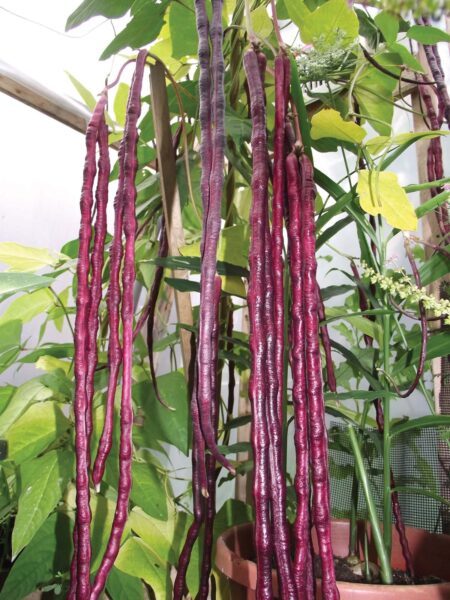Description
Like all common beans, black beans are loaded with protein, fiber, molybdenum, zinc, and copper. But black beans came out on top, having more antioxidant activity, gram for gram, than any other bean! Excellent detoxifier too! Bush Bean
Planting Instructions
Beans need a warmer soil to germinate, at least 15°C, cold soil can actually cause permanent shock to plants and they never recover. Plant beans 1-1.5 in. deep, 4 in. apart, in rows 12-16 inches apart (the more room the beans have, the more they will bush out). Plant into moist soil and give them a good watering after planting. Keep the soil damp, but not wet, until all the seeds have germinated (about 4-8 days after planting). After the seedlings come up, water every 3 days. Once the plants are 8 in. tall, water the root area only when they look thirsty (ie- are very droopy or limp); over watering will limit bean production. See Harvest/recipe sheet for more info.
Harvesting Black Turtle Beans
- Remove pods from the plants when they are light tan and hard in late fall. Open one as a test to ensure the beans are dark black and hard enough that you can’t dent them between your fingernails.
- Pick or snip the dried pods from the plants as they are ready. The bean pods may not all be ready at the same time.
- Pull up the plants if it is late in the season, all the pods are yellow and extended rain threatens. Hang the plants upside down in a dry area, like a shed or garage, until pods are dry and the beans are hard.
- Crack each pod open down its center seed and remove the beans. Each pod contains seven or eight black beans.
- Place the beans on a cookie sheet and let them dry for several days. Any moisture left in the beans could cause them to go moldy in storage.
- Store the dried beans in a closed container such as a sealed plastic bag or screw-top jar. Add more beans as you harvest and dry them.
Companion Planting
Likes: Carrot, Cabbage, Cauliflower, Cucumber, Marigold
Dislikes: Chives, Leek, Garlic






